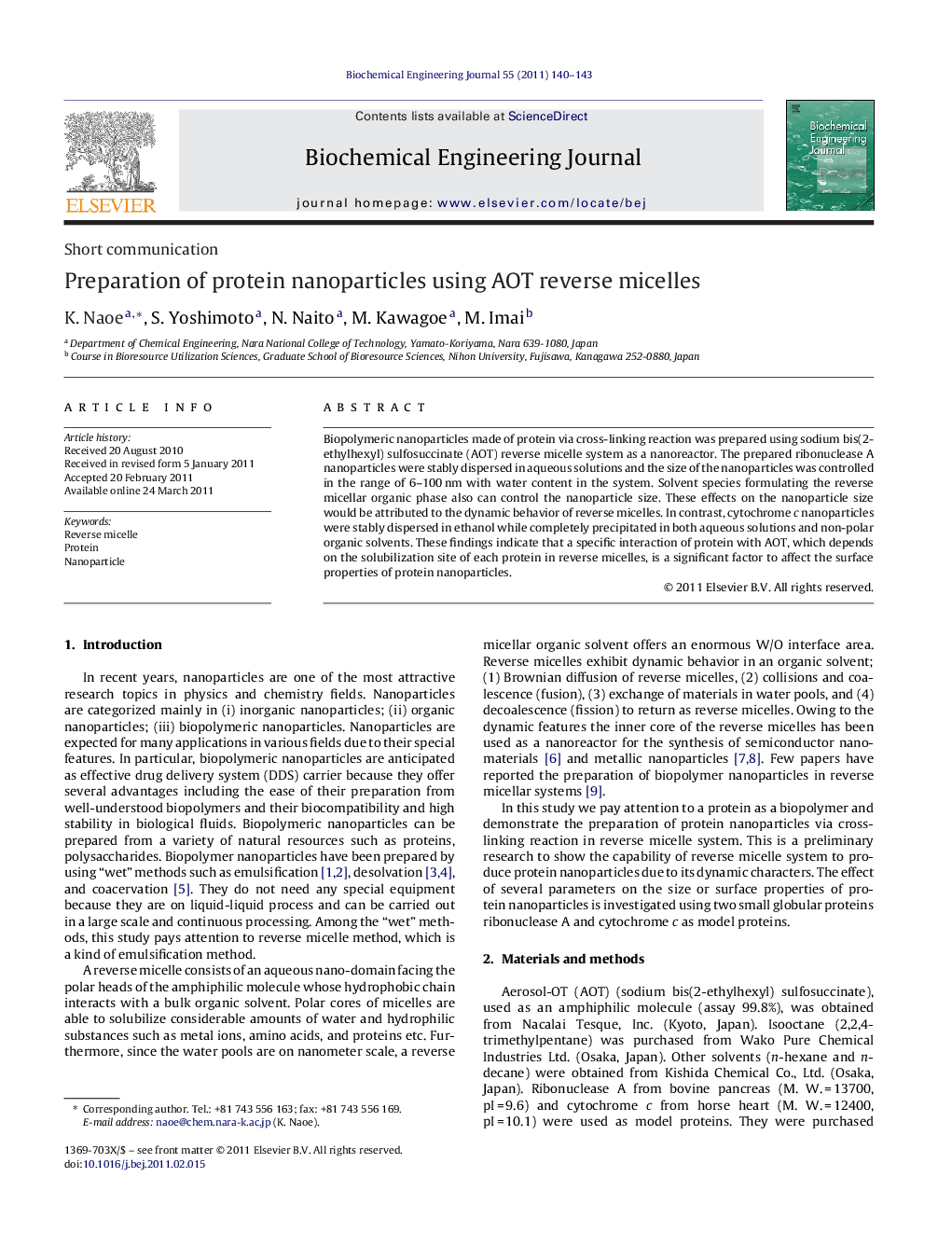| Article ID | Journal | Published Year | Pages | File Type |
|---|---|---|---|---|
| 3759 | Biochemical Engineering Journal | 2011 | 4 Pages |
Biopolymeric nanoparticles made of protein via cross-linking reaction was prepared using sodium bis(2-ethylhexyl) sulfosuccinate (AOT) reverse micelle system as a nanoreactor. The prepared ribonuclease A nanoparticles were stably dispersed in aqueous solutions and the size of the nanoparticles was controlled in the range of 6–100 nm with water content in the system. Solvent species formulating the reverse micellar organic phase also can control the nanoparticle size. These effects on the nanoparticle size would be attributed to the dynamic behavior of reverse micelles. In contrast, cytochrome c nanoparticles were stably dispersed in ethanol while completely precipitated in both aqueous solutions and non-polar organic solvents. These findings indicate that a specific interaction of protein with AOT, which depends on the solubilization site of each protein in reverse micelles, is a significant factor to affect the surface properties of protein nanoparticles.
► Protein nanoparticles were prepared via cross-linking reaction using sodium bis(2-ethylhexyl) sulfosuccinate (AOT) reverse micelle system as a nanoreactor. ► Water-soluble ribonuclease A nanoparticles were successfully prepared in the size range of 6–100 nm by controlling with water content. Solvent species formulating the reverse micellar organic phase also can control the nanoparticle size. ► Cytochrome c nanoparticles prepared in this system were slightly hydrophobic and stably dispersed in ethanol, not in aqueous solutions.
